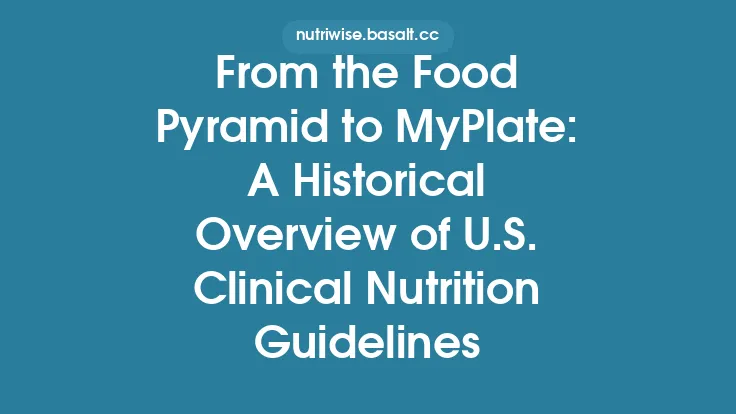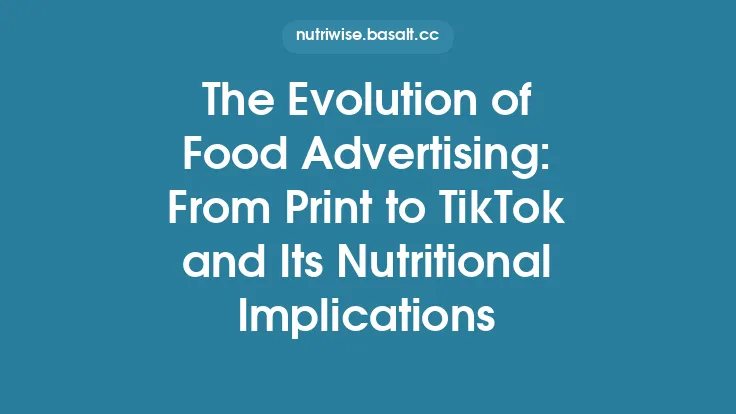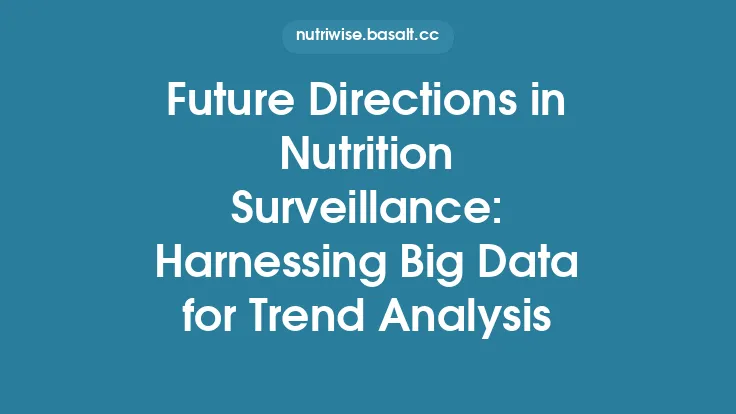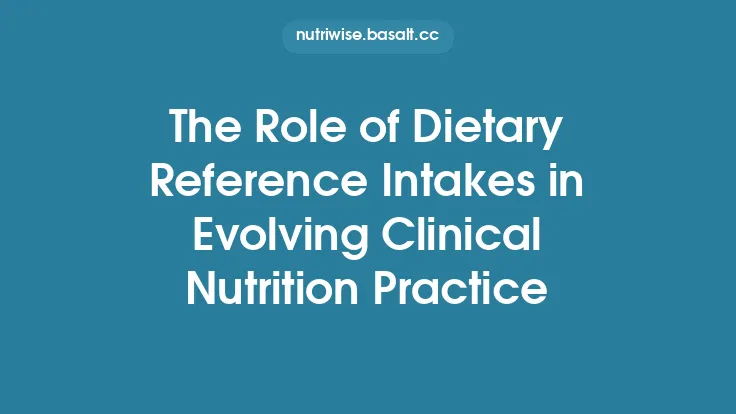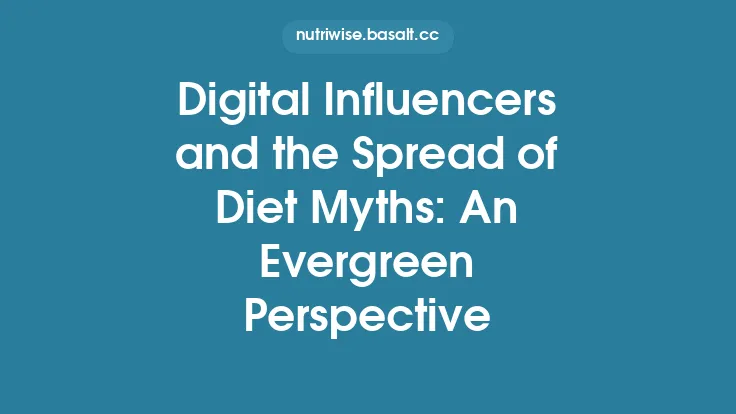Clinical nutrition guidelines have long served as the backbone of diet‑related health care, translating scientific evidence into actionable recommendations for clinicians, dietitians, and policy makers. As the scientific landscape accelerates, the next generation of guidelines will need to incorporate emerging technologies, novel biological insights, and evolving health‑care delivery models. Anticipating these shifts is essential for ensuring that future recommendations remain relevant, precise, and capable of addressing the complex nutritional challenges of diverse populations.
From Population‑Based to Precision Nutrition
The traditional paradigm of clinical nutrition guidelines has been largely population‑centric, offering broad recommendations based on average nutrient needs. The forthcoming evolution will pivot toward precision nutrition, which tailors advice to the individual’s genetic makeup, metabolic phenotype, lifestyle, and environmental exposures.
- Genomic and Epigenomic Data – Advances in whole‑genome sequencing and epigenetic profiling enable the identification of genetic variants that influence nutrient metabolism (e.g., MTHFR polymorphisms affecting folate utilization). Future guidelines will likely embed genotype‑specific dosage ranges and food‑source preferences.
- Metabolomics and Biomarker Integration – High‑throughput metabolomic platforms can capture real‑time metabolic responses to dietary intake. By linking specific metabolite signatures to health outcomes, guidelines can recommend dynamic adjustments rather than static targets.
- Microbiome‑Driven Recommendations – The gut microbiota modulates nutrient extraction, immune function, and metabolic health. Emerging evidence suggests that microbial composition can predict individual responses to macronutrient distribution. Future guidelines may incorporate microbiome profiling to refine fiber, prebiotic, and probiotic recommendations.
Harnessing Artificial Intelligence and Machine Learning
Artificial intelligence (AI) is poised to become a cornerstone of guideline development, synthesis, and implementation.
- Evidence Synthesis at Scale – Machine‑learning algorithms can continuously scan the biomedical literature, extract relevant data, and assess study quality, dramatically shortening the evidence‑to‑recommendation pipeline.
- Predictive Modeling for Outcome Forecasting – AI models trained on large, heterogeneous datasets (electronic health records, nutrition surveys, wearable sensor data) can predict patient‑specific outcomes such as glycemic response or risk of micronutrient deficiency, informing more nuanced guideline thresholds.
- Decision‑Support Tools – Embedding AI‑driven recommendation engines within electronic health record (EHR) systems can provide clinicians with real‑time, patient‑tailored nutrition advice at the point of care, bridging the gap between guideline publication and bedside application.
Digital Health Platforms and Real‑World Data Integration
The proliferation of mobile health (mHealth) applications, wearable devices, and remote monitoring technologies offers unprecedented streams of real‑world data (RWD). Future guidelines will increasingly rely on these data sources to validate recommendations and monitor adherence.
- Continuous Dietary Intake Tracking – Image‑recognition and natural‑language processing enable automated food logging, providing granular intake data that can be aggregated to assess population‑level trends and inform guideline revisions.
- Physiological Monitoring – Wearables that capture glucose, heart rate variability, and activity levels can contextualize dietary recommendations within an individual’s physiological state, supporting adaptive guideline frameworks.
- Feedback Loops for Guideline Refinement – RWD can be fed back into guideline committees through structured dashboards, allowing for rapid identification of gaps, unintended consequences, or emerging safety signals.
Expanding the Scope of Nutrient Interactions
Historically, guidelines have treated nutrients largely in isolation. The next evolution will emphasize the synergistic and antagonistic interactions among macro‑ and micronutrients, bioactive compounds, and non‑nutrient food components.
- Food Matrix Considerations – Recognizing that the health impact of a nutrient can differ depending on its food matrix (e.g., saturated fat in dairy vs. processed meat) will lead to more context‑aware recommendations.
- Nutrient‑Drug Interactions – As polypharmacy becomes more prevalent, guidelines will need to address how specific nutrients influence drug metabolism (e.g., vitamin K and anticoagulants) and vice versa.
- Chrononutrition – Timing of nutrient intake relative to circadian rhythms influences metabolic outcomes. Future guidelines may incorporate recommendations on meal timing, fasting windows, and nutrient distribution across the day.
Strengthening Implementation Science and Health‑Equity Frameworks
Even the most scientifically robust guidelines are ineffective without systematic implementation strategies. The forthcoming wave will embed implementation science principles directly into guideline architecture.
- Implementation Pathways Embedded in Recommendations – Each guideline statement will be paired with actionable implementation steps, resource kits, and performance metrics to facilitate uptake across diverse care settings.
- Equity‑Focused Adaptations – Guidelines will be stratified to address disparities in food access, cultural dietary patterns, and socioeconomic constraints, ensuring that recommendations are feasible and culturally resonant for underserved populations.
- Training and Workforce Development – Standardized curricula for clinicians, dietitians, and allied health professionals will be updated to include emerging topics such as nutrigenomics, AI‑assisted counseling, and digital health literacy.
Regulatory and Policy Alignment
The translation of scientific advances into clinical practice requires alignment with regulatory bodies, reimbursement structures, and public health policies.
- Dynamic Guideline Updating Mechanisms – Regulatory agencies may adopt “living guideline” models, where recommendations are continuously revised as new evidence emerges, supported by pre‑approved amendment pathways.
- Reimbursement Incentives for Precision Nutrition Services – Insurance coverage policies will need to evolve to reimburse genotype‑guided counseling, microbiome testing, and AI‑driven decision support, encouraging broader adoption.
- Data Governance and Privacy Standards – As patient‑generated health data become integral to guideline development, robust frameworks for data security, consent, and interoperability will be essential.
Future Research Priorities to Inform Guideline Evolution
Identifying knowledge gaps now will accelerate the development of next‑generation guidelines.
- Longitudinal Multi‑Omics Cohorts – Large, diverse cohorts that integrate genomics, metabolomics, proteomics, and microbiomics with detailed dietary data will provide the evidence base for precision recommendations.
- Randomized Controlled Trials of Digital Interventions – Rigorous trials evaluating AI‑driven counseling, wearable‑guided nutrition plans, and tele‑nutrition platforms will clarify efficacy and inform best‑practice standards.
- Health‑Economic Analyses – Cost‑effectiveness studies of personalized nutrition interventions will guide policy decisions and reimbursement models.
Concluding Perspective
The trajectory of clinical nutrition guidelines is moving toward a more individualized, data‑rich, and implementation‑focused future. By embracing precision nutrition, leveraging AI and digital health, acknowledging complex nutrient interactions, and embedding equity and implementation science into the guideline development process, the next evolution will deliver recommendations that are not only scientifically sound but also practically actionable across diverse patient populations. Preparing for this shift now—through research investment, workforce training, and policy alignment—will ensure that clinical nutrition continues to be a pivotal driver of health promotion and disease prevention in the decades to come.
